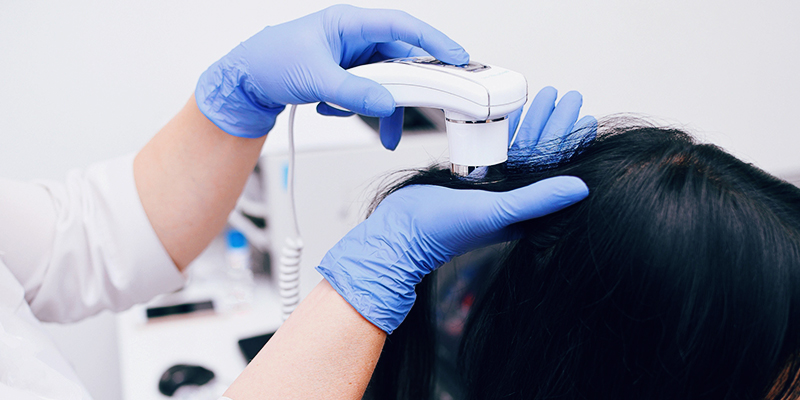Hair transparent in the new age is a bit of a process with the new tech
Hair transplantation is a surgical technique that removes hair follicles from one part of the body, called the 'donor site', to a bald or balding part of the body known as the 'recipient site'. The technique is primarily used to treat male pattern baldness. In this minimally invasive procedure, grafts containing hair follicles that are genetically resistant to balding like the back of the head are transplanted to the bald scalp. Hair transplantation can also be used to restore eyelashes, eyebrows, beard hair, chest hair, pubic hair and to fill in scars caused by accidents or surgery such as face-lifts and previous hair transplants.
The hair is the the richest ornament of person
Hair transplantation differs from skin grafting in that grafts contain almost all of the epidermis and dermis surrounding the hair follicle, and many tiny grafts are transplanted rather than a single strip of skin.

A hair in the head is worth two in the brush
Since hair naturally grows in groupings of 1 to 4 hairs, current techniques harvest and transplant hair "follicular units" in their natural groupings. Thus modern hair transplantation can achieve a natural appearance by mimicking original hair orientation. This hair transplant procedure is called follicular unit transplantation.
hair loss treatments for men & women
Advances in wound care allow for semi-permeable dressing, which allow seepage of blood and tissue fluid, to be applied and changed at least daily. The vulnerable recipient area must be shielded from the sun, and shampooing is started two days after the surgery. Some surgeons will have the patient shampoo the day after surgery. Shampooing is important to prevent scabs from forming around the hair shaft. Scabs adhere to the hair shaft and increase the risk of losing newly transplanted hair follicles during the first 7 to 10 days post-op.
professional medical hair restoration
- Laser Hair Regrowth
- Scar Revisions
- Eyebrow Restoration
During the first ten days, some of the transplanted hairs, inevitably traumatized by their relocation, may fall out. This is referred to as "shock loss". After two to three months new hair will begin to grow from the moved follicles. The patient's hair will grow normally, and continue to thicken through the next six to nine months. Any subsequent hair loss is likely to be only from untreated areas. Some patients elect to use medications to retard such loss, while others plan a subsequent transplant procedure to deal with this eventuality.
By HetmayarFormosa is a minimally invasive method of advanced hair transplant where balding areas are restored by removing individual Follicular Units directly from donor area one unit at a time and transplanting.

The use of both scalp flaps, in which a band of tissue with its original blood supply is shifted to the continue bald area, and free grafts dates back to the 19th century. In 1897, Menahem Hodara successfully implanted hair taken from the unaffected areas of the scalp on to the scars that were left bald by favus. Modern transplant techniques began in Japan in the 1930s where surgeons used small grafts, and even "follicular unit grafts" to replace damaged areas of eyebrows or lashes, but not to treat baldness.
The modern era of hair transplantation in the western world was ushered in the late 1950s, when New York dermatologist Norman Orentreich began to experiment with free donor grafts to balding areas in patients with male pattern baldness. Previously it had been thought that transplanted hair would thrive no more than the original hair at the "recipient" site. Orentreich demonstrated that such grafts were "donor dominant," as the new hairs grew and lasted just as they would have at their original home.











Robert John
January 13 2023Transplant operations are performed on an outpatient basis, with mild sedation and injected local anesthesia The scalp is shampooed and then treated with an antibacterial agent prior to the donor scalp being harvested.
ReplyChristine Hill
December 27 2023This hair transplant procedure is called follicular unit transplantation Donor hair can be harvested in two different ways.
Reply